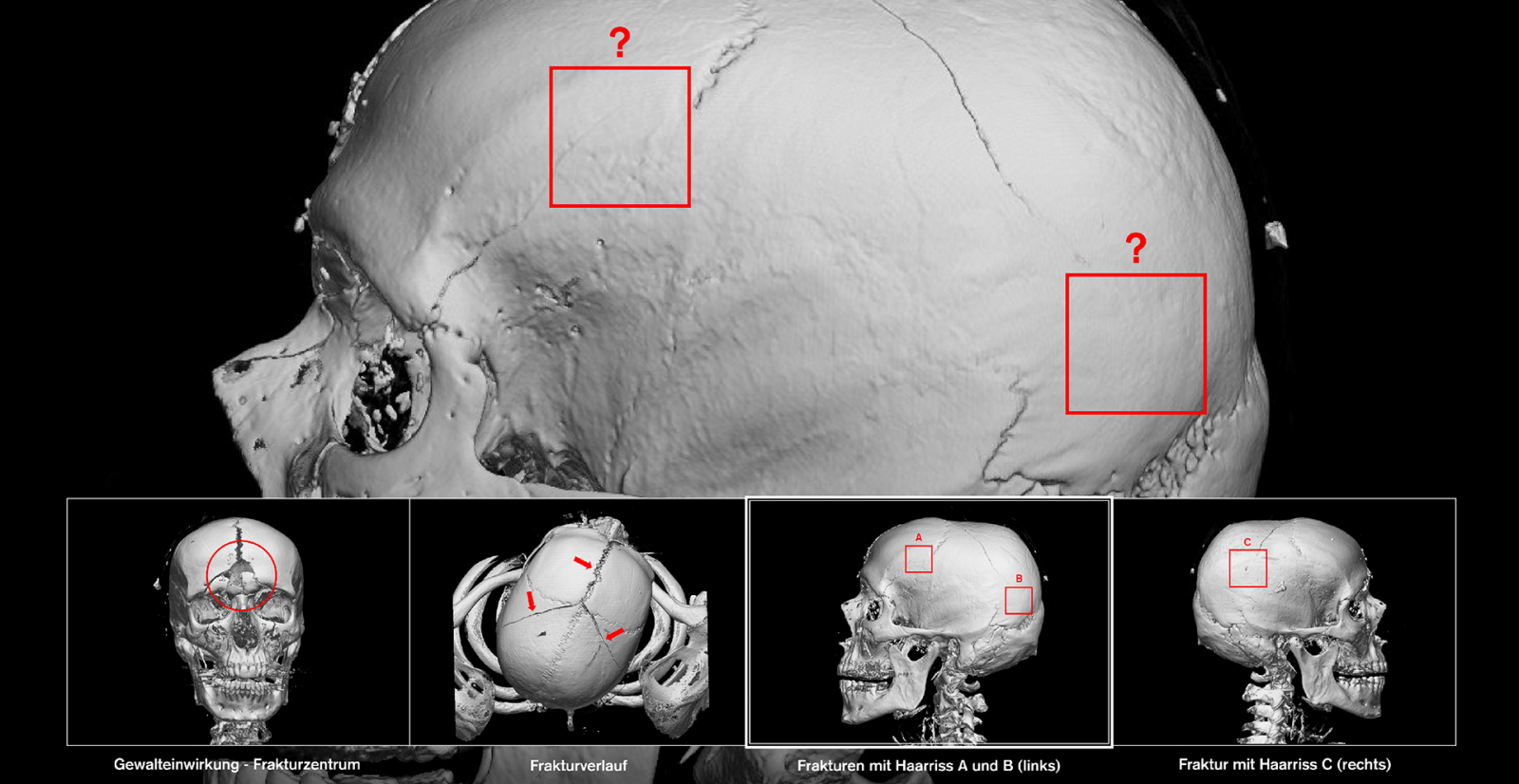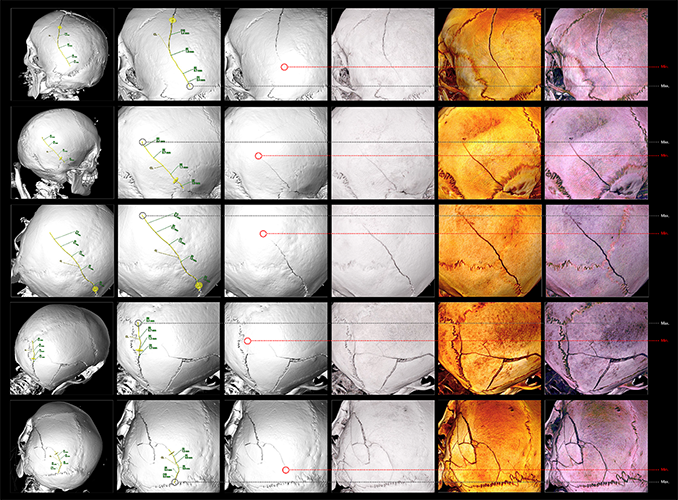Colour and Knowledge in Virtual Autopsy (Virtopsy)
Design strategies for the visualisation of hairline skull fractures by means of 3D reconstructions in post-mortem computed tomography
This highly specialised master thesis explores how hairline skull fractures can be made visible by using false colours. In terms of the forensic analysis of violent crimes, the forensic findings about hairline fractures can have a decisive impact on court rulings.
The key question therefore is: How can 3D reconstructions in computed tomography be coded by using colours so the clinic-forensic findings regarding hairline skull fractures can be efficiently reconstructed, expressively visualised and effectively conveyed?
In forensic medicine, 3D reconstructions of skull fractures in computed post-mortem tomography (PMCT) are becoming ever more important. Visualisations of PMCT data have a great impact on how the structures of the findings contained therein are perceived and interpreted. The use of colour plays an essential role in this. Colours do not only influence the expressivity and information density of a visualisation, but also the interpretation of the forensic findings. This master thesis examines colours and colour coding as «tools of insight and discovery», for their capacity to make hidden information which is highly relevant for medicinal and legal purposes both visible and interpretable. The results of this thesis are an essential contribution to forensic research and practice.
Designer:
Eloisa Aldomar
Project Type:
MA diploma project, Subject Area in Knowledge Visualization
Year:
2019
Website:
showcasedesign.zhdk.ch
Venue:
Digital Festival, Schiffbau

